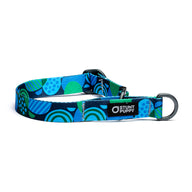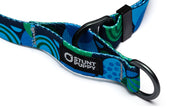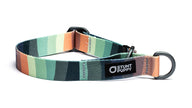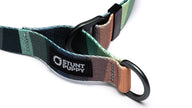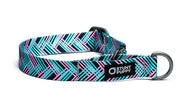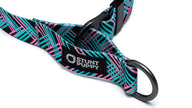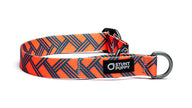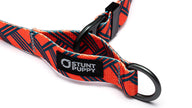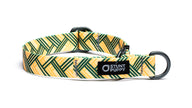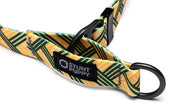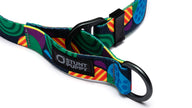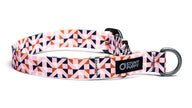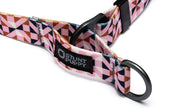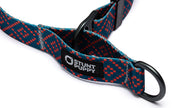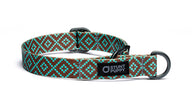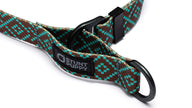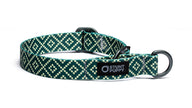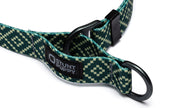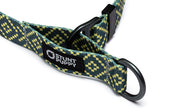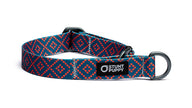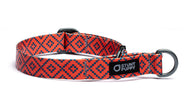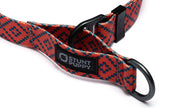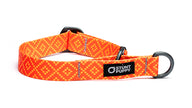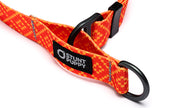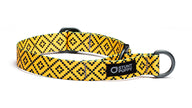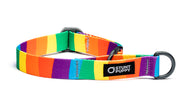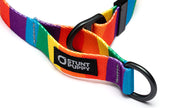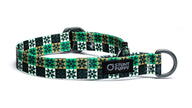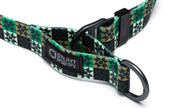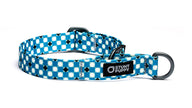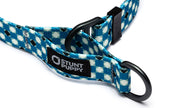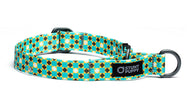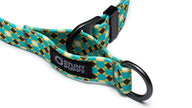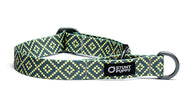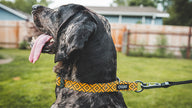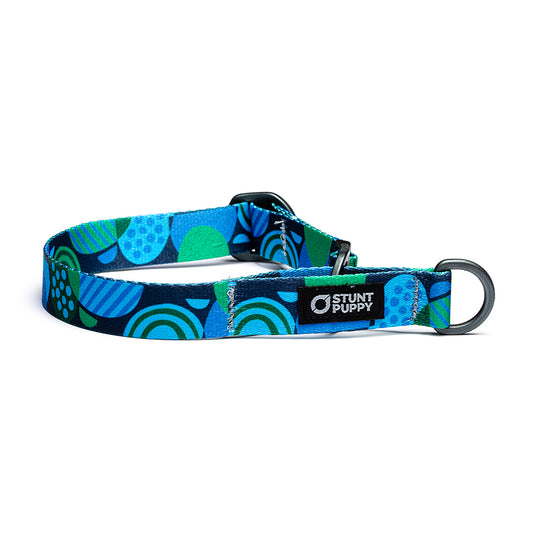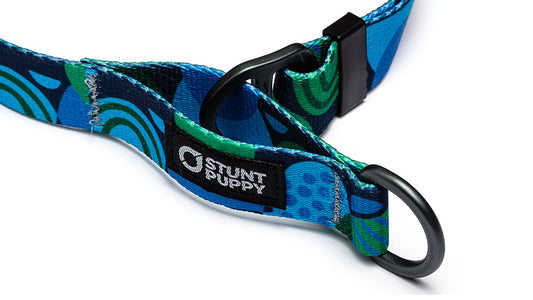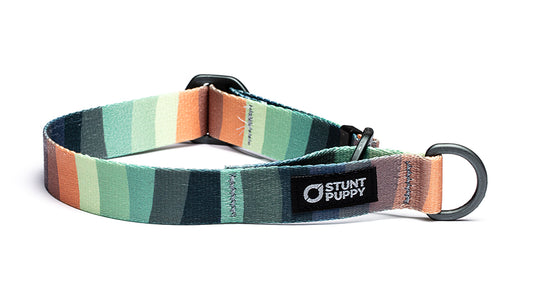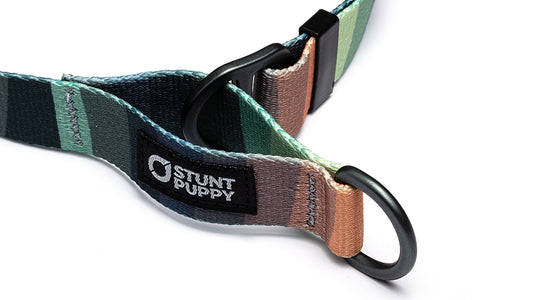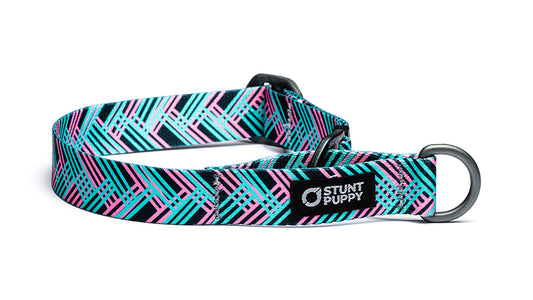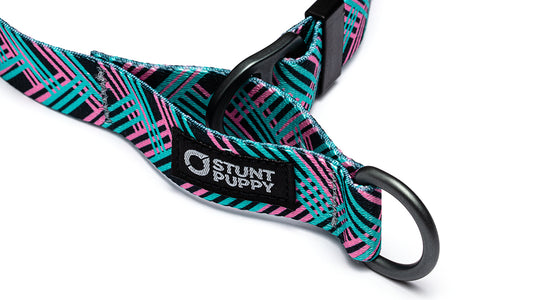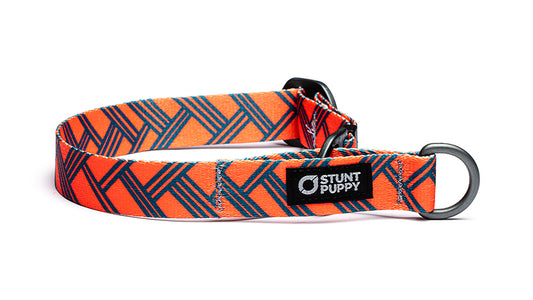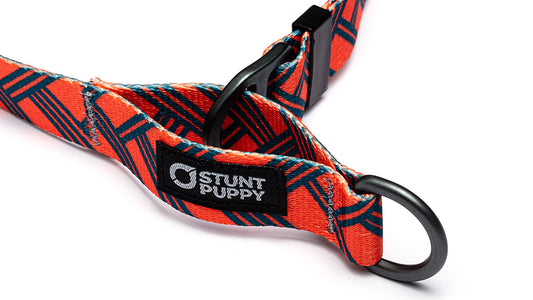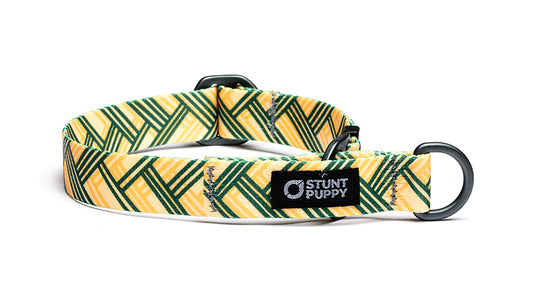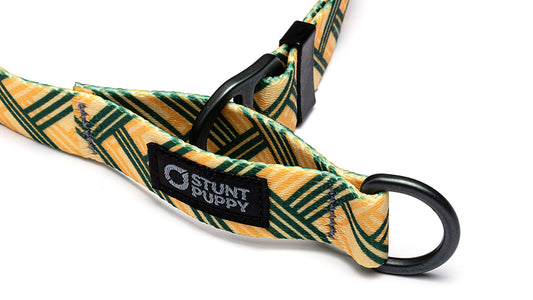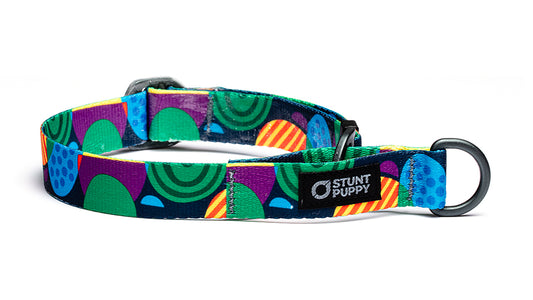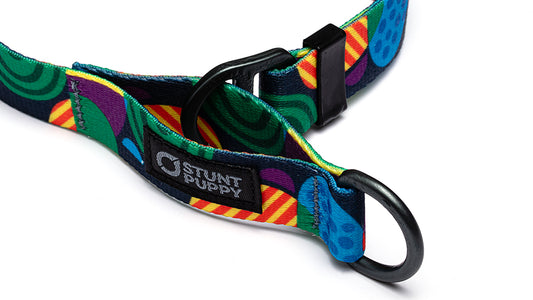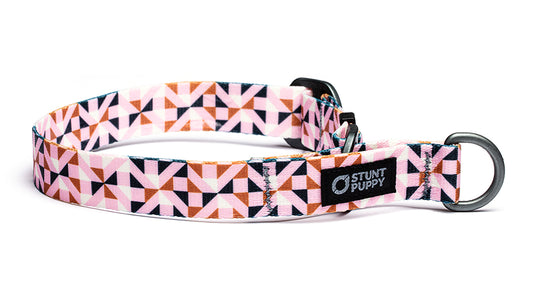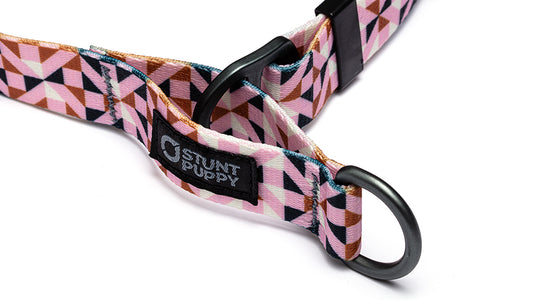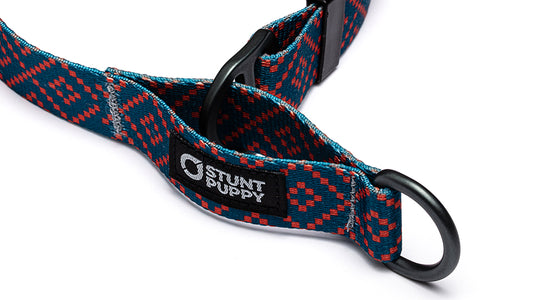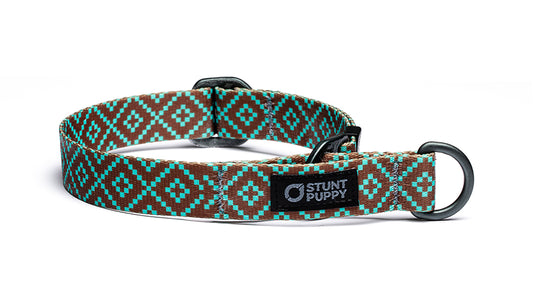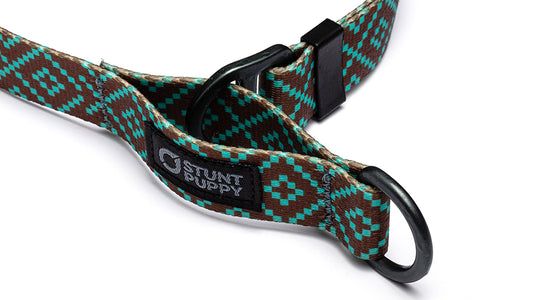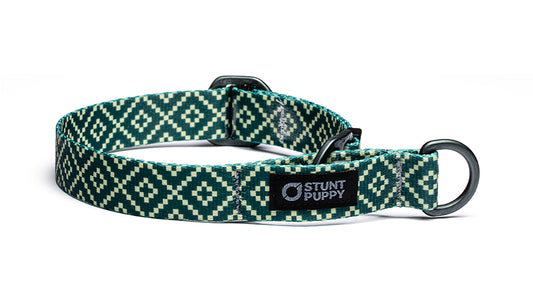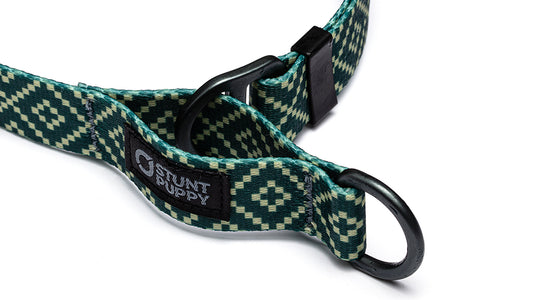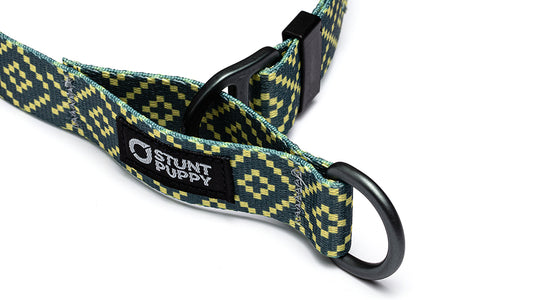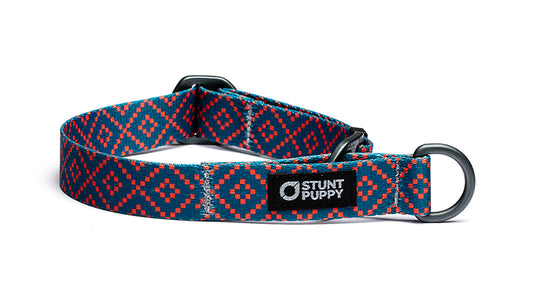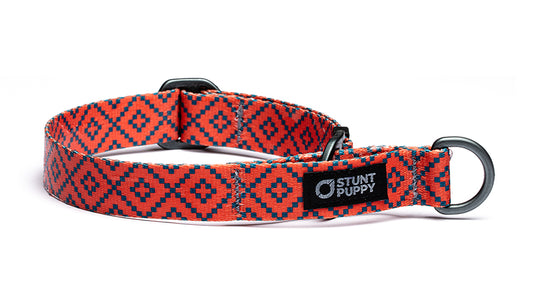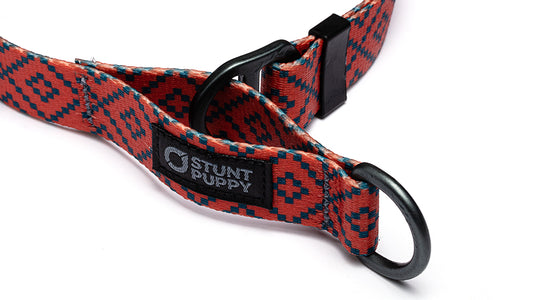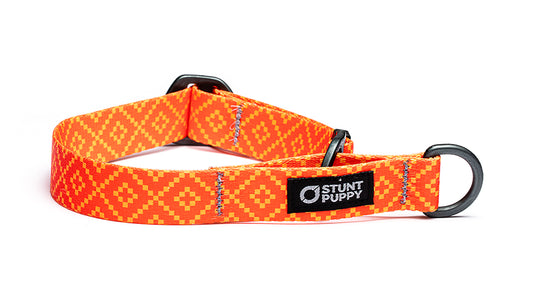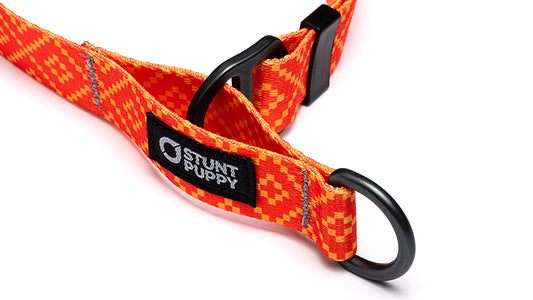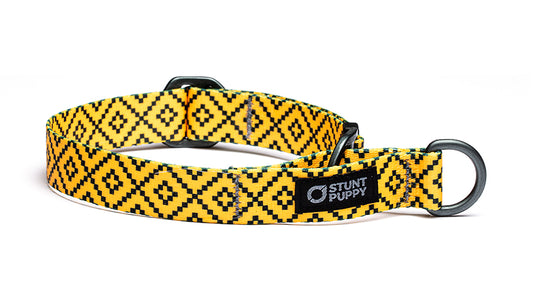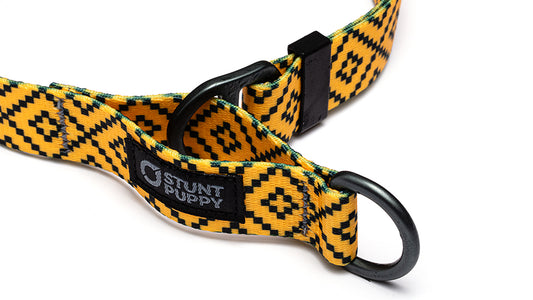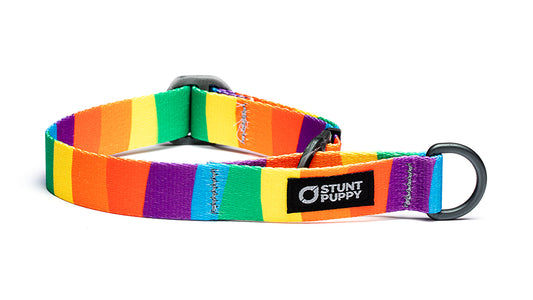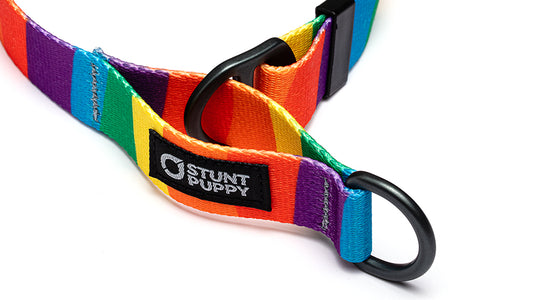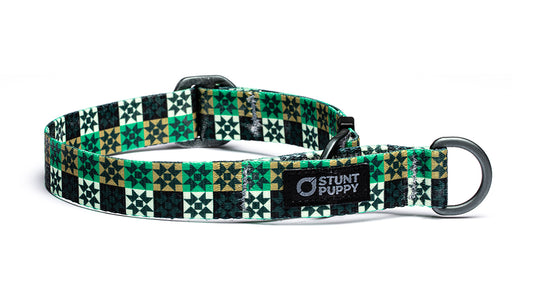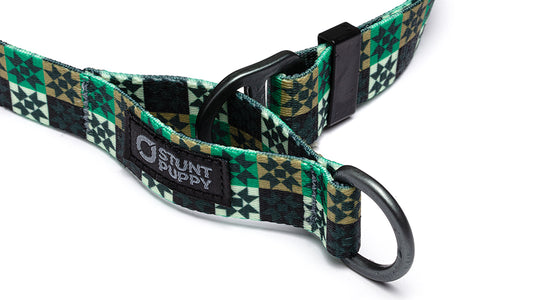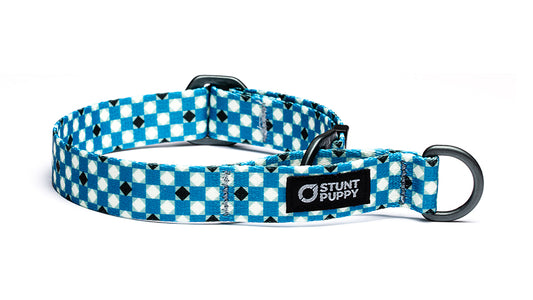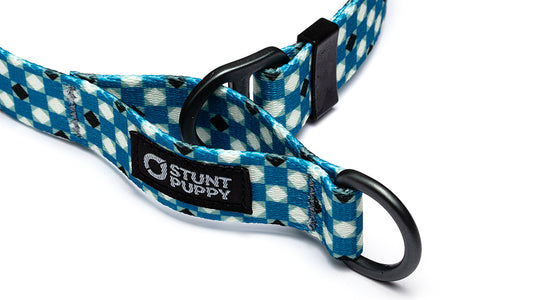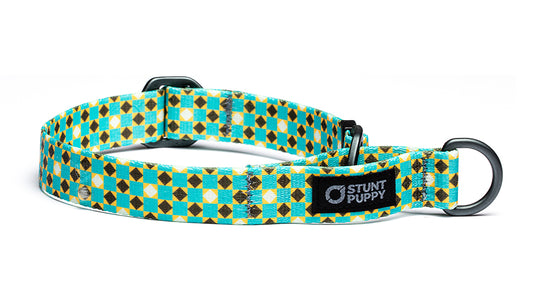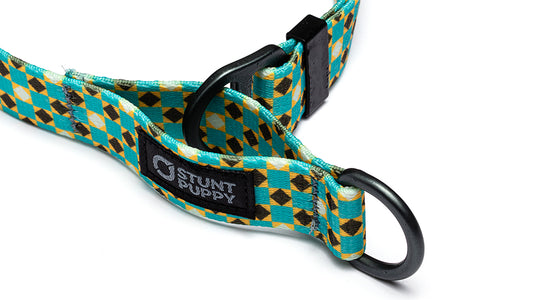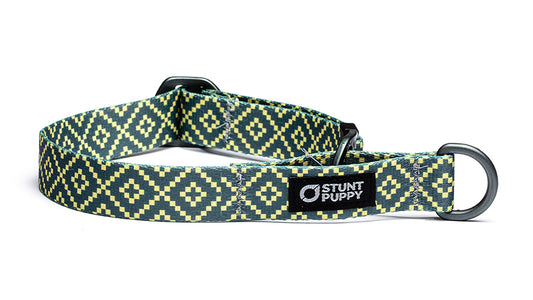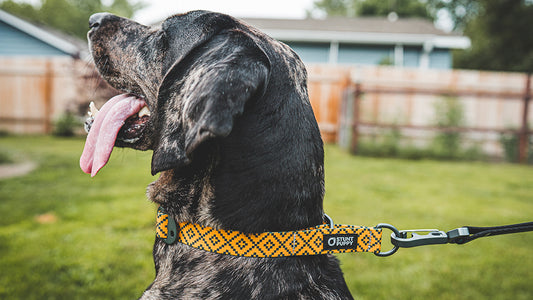Whether you’re a sight hound with a slimline head or in training to become an angel on the leash a Martingale or Slip Collar is a safe and comfortable type of training collar. Communication is the foundation of any great relationship and for many dogs these collars are a good way to improve communication using the pressure of touch. The limited-slip function means that the collar cannot continue tightening beyond a certain length (ours is 3”) making them safer than traditional slip collars which can tighten without limitation.
The secret sauce of the Limited-Slip Collar is the control loop that allows you to apply and release pressure without the collar becoming excessively tight; and if properly adjusted it prevents dogs backing out of the collar when you disagree on direction. The position and action of the collar mean that minimal pressure is required compared to other tools such as harnesses.
With correct use, the collar allows you to apply gentle to more intense pressure to shift your dogs attention away from distractions, or disrupt unwanted behavior before it escalates. Once your dog turns attention back to you, you relax the pressure and voila - we have communication! With practice, there will be little to no pressure on the collar unless required.
Not intended for tie-out.
Materials
Durable, soft-touch webbing glides smoothly and silently in the control loop for calm, steady communication
Designs are dye sublimated in our USA workshop for beautiful, long-lasting prints
Anodized Aluminimum Alpha hardware is super-strong and feather light
Bar tack stitching for strength and smooth operation of the loop
Made in the USA
Design
Limited slip-style martingale function gives additional safety and lies flat against the neck for a neater, streamlined fit
The limited slip allows a maximum shortening of 3” in the control loop
Important Information About Limited-Slip Collars
Professionals stand firm in their belief that limited-slip collars are a training tool, not an everyday collar and we stand with them on that. They are never, ever, ever, not even sometimes-because-you-forgot or only-for-a-few-minutes to be left on your dog when it’s off leash and/or unattended. This includes at inside at home, in the yard, at daycare or out on a walk. The risk of your dog snagging the control loop on a branch, tooth of another dog, or other object is real and your dog can’t back out of this collar so can trap and potentially choke itself. We have other brilliant flat collars that can be used outside of school-time so please heed our warning and be good to your dog.
If you are not going to heed this advice, then always ensure that if your dog is not under your supervision that the collar is loosened so even if it became caught in something, they could back out.
The second rule of limited-slip collars is that they need to be properly fitted to be effective. Here are our sizing and fitting instructions:
Sizing: Take Two Measurements
Measure your dog around the widest part of its head. This is typically around the cheeks/jawbones and up behind the ears
Measure your dog around the base of its neck - just behind the ears and jawbones. That is where the collar will sit when you’re working it. This number should be smaller than the first number unless you have a sight hound.
Choose a collar size based on the neck measurement and opt for one where this is in the centre range of the adjustment i.e. if the measurement is 15” choose a collar 13 - 16” rather than 14 - 21”.
Small: 12-18" necks
Medium: 14-21" necks
Large" 18-24" necks
Fitting and Adjustment:
The Martingale should sit right behind the ears (think a show dog at Westminster) when in use
It should not sit midway down the neck like an everyday collar
When the control loop is pulled tight, the collar should be firm and the dog should not be able to back out. If it is pulled to its tightest and your dog can wiggle out, it’s too loose.
When the control loop is relaxed, the collar will rest comfortably and without tension.
Note that if you are leaving this collar on all the time (please don’t) that you must loosen the collar when you’re not with your dog; and adjust it to working length when in training.
The third rule of martingale collars is that if after you’ve worked with it for a few weeks and your dog simply pulls through it keeping it constantly tight, you need another approach. Consider consulting a trainer who may recommend a different tool or check out our Go-Dog-Glo Harness that uses pressure around the body rather than around the throat.

